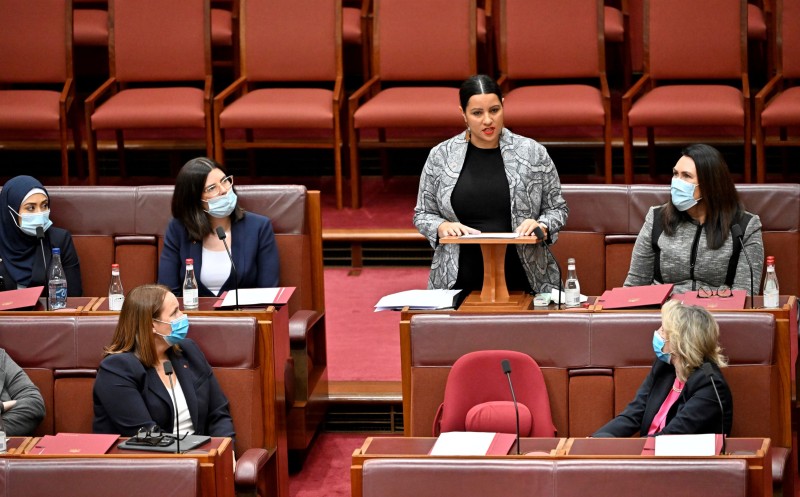Can you explain what the different types of motions are?
Interesting question! All decisions of the Australian Parliament, in both the Senate and the House of Representatives, begin as motions. A motion is a formal proposal made by a senator or member asking the Senate or House to take action of some kind. Decisions are made by agreeing to a motion. For example, the Senate and House the pass bills – proposed laws – by agreeing to a series of motions. Motions are used to refer matters to a committee for investigation or to seek the support of the Senate or House for an issue.
In order for a motion to be considered in the House, a member must move the motion and usually another member must second it. The Speaker of the House of Representatives then puts the motion – question – to the House, which debates and votes on the question. If the House agrees to the motion, then all members of the House must accept that decision. A similar procedure is followed in the Senate.
A senator speaking in the Senate

DPS Auspic
Description
A senator standing up at her desk to give a speech in the Senate. Another 6 senators remain in their rows of seats, but have turned towards the senator who is speaking to listen.
When giving speeches in the Senate, senators:
- represent the views of the people of their state or territory
- have their say on bills – proposed laws – and other matters
- scrutinise – closely examining – the work of the government
- discuss important Australian or international issues.
Permission should be sought from DPS AUSPIC for third-party or commercial uses of this image. To contact DPS AUSPIC email: auspic@aph.gov.au or phone: 02 6277 3342.